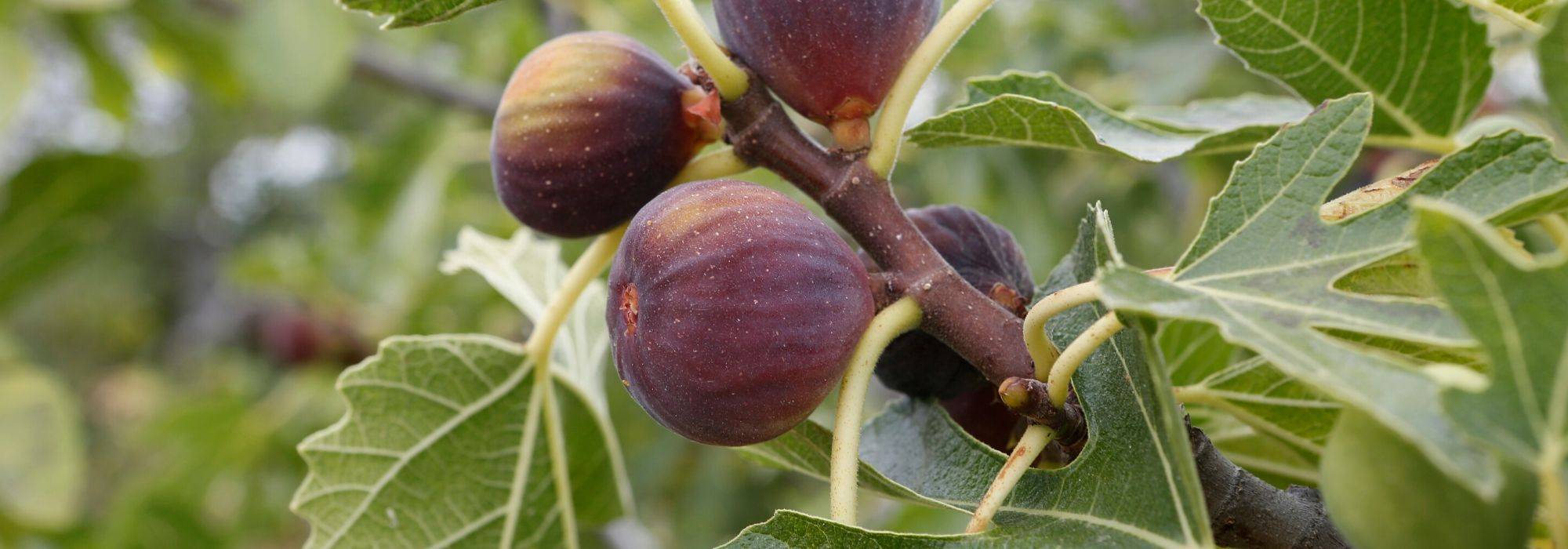
Fig tree, Ficus carica: planting, pruning and care
Contents
Fig tree in a nutshell
- With its twisted silhouette, fig tree is one of the most beautiful fruit trees
- Fig is an iconic fruit of Mediterranean gardens
- Highly ornamental, it offers both delicious sweet figs, purple or green, and superb exotic foliage
- Among fig tree varieties, there are uniferous varieties, producing a single harvest in autumn, and biferous varieties, fruiting twice a year
- Fig tree is a hardy tree, preferring a sunny, sheltered position protected from strong winds, particularly in colder regions
A word from our expert
The fig tree or Ficus carica is a fruit tree that instantly evokes warmth and sunshine of Mediterranean gardens. It produces beautiful fruits with green or purple skin and sweet, fragrant flesh. With its large, deeply lobed leaves lending an exotic touch and its often gnarled trunk, the fig tree is often regarded as one of the most beautiful fruit trees.
Among fig trees, there are self-fertile varieties that do not require other fig trees, single-crop varieties producing a single harvest per year in early autumn, and biferous varieties fruiting twice a year. There are many fig varieties eaten fresh or dried.
Hardy, it is a robust tree that adapts to many regions, favouring a sunny position sheltered from strong winds, especially in colder areas.
From watering to fruiting, including yield per tree, cutting or pruning of the fig tree, here are our tips to plant it correctly, care for it and harvest beautiful figs!
Description and botany
Botanical data
- Latin name Ficus carica
- Family Moraceae
- Common name Fig tree
- Flowering May
- Height 1.50 to 10 m
- Exposure Sun
- Soil type rich, light
- Hardiness -10 to -15°C
Fig tree or Ficus carica is a fruit tree of the family Moraceae, native to warm-climate countries, from Turkey and Asia Minor.
The genus Ficus includes more than 800 fig species, with around 250 species commonly found in France and thousands of cultivars derived from Ficus carica. Sexual reproduction in fig is very complex; only female fig trees, known as “domestic” fig trees, produce edible fruit; male fig trees or “caprifigs” or “wild” figs produce non-edible figs because they harbour the blastophage or “fig wasp”, the only pollinating insect of the fig, present only in southern France. Common domestic fig trees fall into two groups :
- single-crop varieties, producing one harvest per year, from August to October;
- biferous varieties, offering two harvests per year: early July figs called ‘breba’ appearing on last year’s wood, and autumn figs that grow on this year’s wood.
Among fig trees there are also self-fertile varieties that do not require other fig trees and do not need the blastophage (parthenocarpic), and self-sterile fig trees.
From a powerful, running root system, the fig forms a vigorous, ramified small tree with a rounded, spreading and erect habit, often with a tortuous trunk, rarely exceeding 3 to 5 m in every direction at maturity in our gardens. Dwarf varieties under 1.50 m exist, ideal for container growing or small spaces. Wood is soft and spongy, bark grey-ashen and smooth and branches contain a white latex.
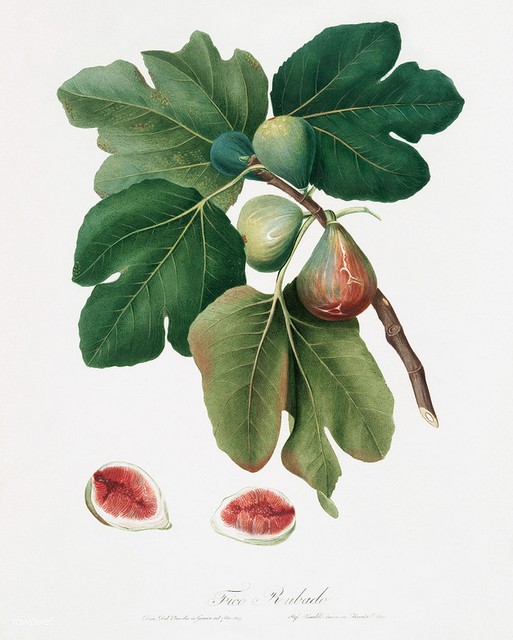
Ficus carica – illustration by Giorgio Gallesio
Fig is a deciduous tree, highly ornamental due to its large, deeply divided, glossy foliage. Flexible shoots carry large alternate leaves, thick and rough, long-petiolate reaching 20 to 30 cm long. They are palmate and the lamina is deeply divided into 3 to 6 variable-shaped, crenate lobes. Leaves are glossy above and have a finely velvety underside with prominent, paler veins covered in short hairs. Leaves are bright to dark green, turning yellow in autumn.
Flowering in fig is unusual. In May, urn-shaped inflorescences called “synconia” appear directly on the shoots in the axil of the leaves. These small sacs are lined with several thousand tiny female flowers, looking like seeds.
These fleshy receptacles present a small opening, called the “eye”, through which fig wasps enter to fertilise the flowers. Figs can then form and swell: figs are not strictly fruits but from a botany point of view an infructescence, that is “syconia”. The true fruits are the countless tiny grains (or achenes) scattered through the fig flesh.
Fig produces fruit from July to October. Attached to the shoot by a sort of umbilicus, these elongated, pear-shaped, pendulous fruits 4 to 5 cm in diameter have a skin that may be thin, velvety, bloom-covered or glossy, striate or cracked. ‘Bourjassotte noire’ is notable for its flattened shape. Three fig colours are distinguished :
- green or white figs with skin from light yellow-green to dark green (fig tree ‘Goutte d’Or’);
- red figs often called grey figs;
- black or purple figs (fig tree ‘Violette Dauphine’, fig tree ‘Noire de Bellone’).
There is a variegated variety, the ‘Bourjassotte Rayée’, producing attractive yellow skin streaked with green.
These fruits contain a fine, juicy and aromatic flesh, white, pink or red depending on variety, speckled with tiny grains. Some figs (‘Goutte d’Or’) exude a golden drop when ripe. All release a milky sap or irritating white latex when detached from their peduncle.
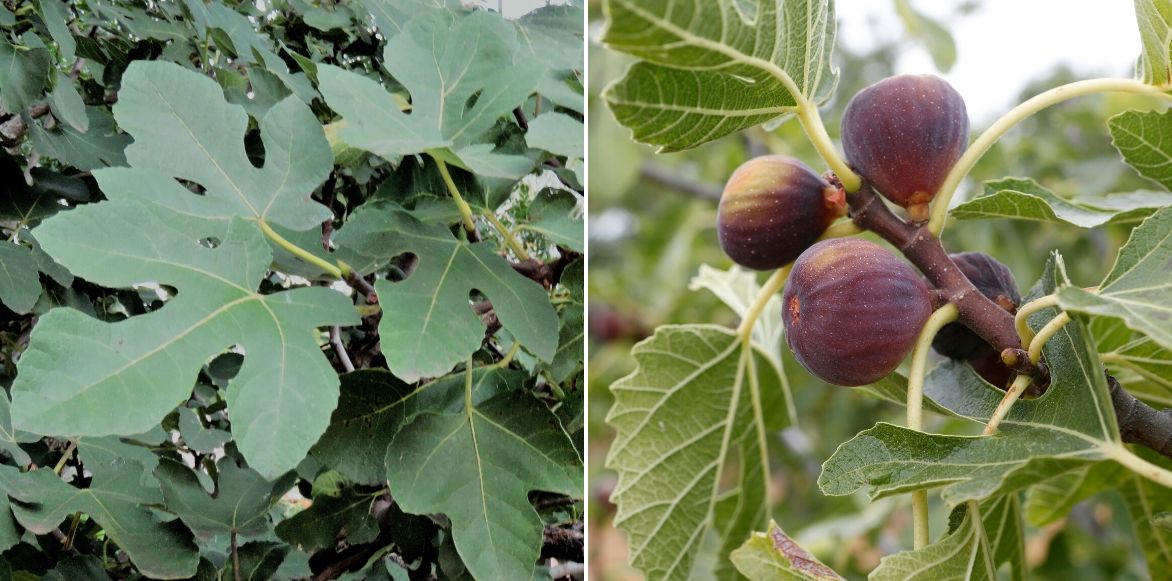
Leaves and fruit of the fig tree
From its Mediterranean origins, fig has retained some tenderness to cold. It is poorly suited to montane climate, but can acclimatise in most regions, resisting down to -15°C provided it is well exposed and sheltered from winter winds in colder areas. It is undemanding regarding soil and will accept ordinary, even poor, stony and dry ground, but performs best in deep, light, well-drained soil with sufficient lime.
Fig tree was one of the first fruit trees cultivated by humans. Figs were part of the staples of all ancient Mediterranean peoples. Today Turkey, Egypt, Greece and Morocco are the largest fig producers. In France, the Var produces 80% of national fig production. Louis XIV planted more than 700 fig trees of various varieties in the kitchen garden of the Château de Versailles.
Which variety of fig tree should I choose?
Climate is a determining factor when choosing a fig tree. There are many varieties derived from Ficus carica. In the warmest regions, it is possible to harvest figs twice a year: in June and in autumn with biferous varieties. Uniferous varieties produce a single harvest per year at the start of autumn. This is the main criterion a beginner gardener should use to choose a fig tree.
North of the Loire, it is essential to choose your fig tree from uniferous varieties because spring frosts are very likely to compromise a June harvest. In these regions, also choose a self-fertile variety capable of producing fruit by parthenocarpy, that is without fertilization, because the fig tree’s sole pollinating insect is present only in southern France and is too tender to survive in cold climate.
To make the right choice, do consult our buying guide : “Fig tree: how to choose the right variety”
Uniferous fig trees

Fig Tree Rouge de Bordeaux - Ficus carica
- Flowering time September
- Height at maturity 2,50 m
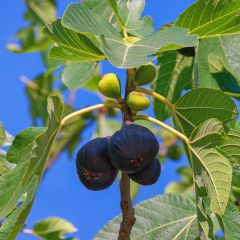
Fig Tree Noire de Bellone - Ficus carica
- Flowering time August to October
- Height at maturity 4 m
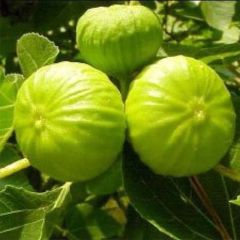
Ficus carica Nazareth
- Flowering time September
- Height at maturity 2,50 m
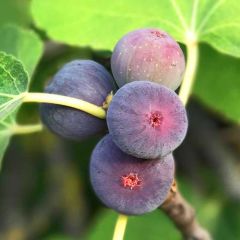
Ficus carica Figality
- Flowering time August, September
- Height at maturity 1,50 m

Fig Tree Panachée - Ficus carica
- Flowering time September
- Height at maturity 4 m
Biferous fig trees
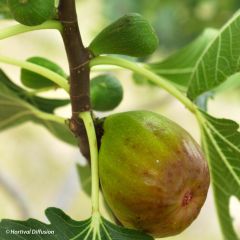
Fig Tree Goutte D'Or- Ficus carica
- Flowering time August
- Height at maturity 2,50 m

Ficus carica Précoce de Dalmatie
- Flowering time September
- Height at maturity 2,50 m
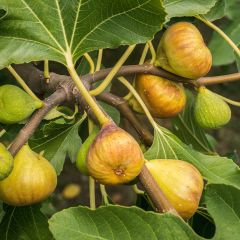
Fig Tree Madeleine des Deux Saisons - Ficus carica
- Flowering time July, August
- Height at maturity 4 m
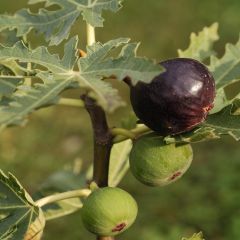
Ficus carica Ice Crystal
- Flowering time August
- Height at maturity 2 m
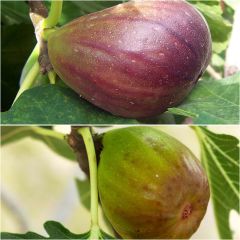
Duo of Brown Turkey red fig trees and Goutte d'Or white fig trees
- Height at maturity 4 m
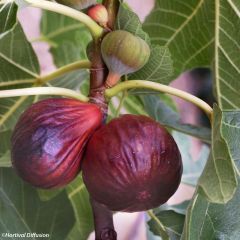
Fig Tree Violette Dauphine
- Flowering time August to October
- Height at maturity 5 m
Discover other Fig trees
View all →Available in 0 sizes
Available in 3 sizes
Available in 1 sizes
Available in 3 sizes
Available in 3 sizes
Available in 4 sizes
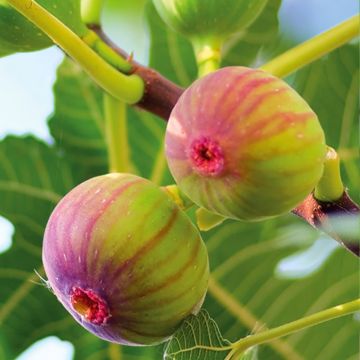
Available in 1 sizes
Available in 3 sizes
Available in 2 sizes
Available in 2 sizes
Planting
Where to plant fig tree?
Contrary to popular belief, the fig tree can acclimatise to most of our regions, provided right variety is chosen. It tolerates negative temperatures down to -15°C provided it is given a warm, sunny position well sheltered from cold winds (south or south-west) and from spring frosts that can jeopardise harvests, particularly north of the Loire. Fig tree likes to keep its head in sun: to help it fruit well, plant against a south-facing wall that will protect it from cold during harsh winters.
In regions where spring frosts are a concern, it is essential to choose self-fertile fig tree varieties that do not require pollinator insect intervention (the fig wasp is too tender to survive in cold climate) as well as uniferous varieties (‘Ronde de Bordeaux’ or ‘Pastilière’), which produce a single harvest each year in early autumn because young shoots and flower buds can be destroyed by cold from about -10 to -12°C, compromising crop of breba figs, which appear earlier.
Undemanding regarding soil, fig tree adapts to all soils, even poor, dry or rocky ones, but will perform better in deep, cool soil during first years after planting, on calcareous, well-drained ground. Fig tree likes to have roots in water during summer, especially during fruit ripening. Once established, it will tolerate drought perfectly.
Fig tree can quickly become invasive in a small garden. Choose location carefully because once well rooted it tends to be spreading. It can be trained against a wall as well as grown free-standing. In summer, its ample foliage will provide welcome shade if planted near a terrace.
When to plant fig tree?
The fig tree is planted in autumn from September to November in mild regions or in spring from February to April in colder regions, in all cases when frost-free.
How to plant fig tree?
Planting in open ground
Allow spacing of 3 to 6 m between two fig trees depending on mature size.
- soak container 15 minutes in a basin of water;
- dig hole about five times volume of rootball and loosen soil well;
- lay a bed of gravel at bottom of planting hole;
- bury young plant up to collar in mixture of garden soil and compost or potting compost (well-rotted) and 25% coarse river sand if soil is too heavy;
- firm soil;
- make a basin around trunk;
- water thoroughly.
In a pot
Dwarf fig trees (‘Figality’, ‘Icecrystal’) are perfect for pot culture on a sunny terrace or for small spaces.
- spread a layer of gravel on bottom of a sufficiently large pot;
- plant fig tree in mixture of garden soil and potting compost or well-rotted compost;
- water regularly without waterlogging and without leaving water to stagnate in saucer beneath container.
Read also
How to take a fig cutting and succeed?When and how to harvest figs?
Expect to wait around 5 to 7 years after planting for a fig tree to reach full yield. Figs reach ripeness in summer, from early July to mid-August and/or in autumn up to October, depending on the variety.
They are harvested as they ripen because they must be picked according to their ripeness and eaten fairly quickly. Pick them once they are slightly soft to the touch but not too mushy and when they detach easily from the tree. Very ripe figs tend to split.
Depending on region, you will harvest between 10 and 100 kg of fruit per tree.
→ Learn more in our tutorial How to harvest and store figs?
How to store figs?
Figs are delicate and rarely keep for more than two days at room temperature. Figs do not ripen further once picked. Do not store them in the fridge, which alters their flavour. You can keep them a little longer by arranging them in a single layer on racks so they do not touch, in a dry, well-ventilated room with low humidity. You can also freeze raw figs in airtight bags after washing and drying them.
How to use figs?
Figs can be eaten fresh, dried and processed.
They are used in sweet dishes (tarts, clafoutis, jams, compotes, chutneys) or savoury ones. They pair very well with some fresh cheeses such as goat cheese, cured ham, duck breast or foie gras.
Roasted or caramelised, they will enhance pork, as well as poultry and white meats. Dried, they are eaten like dried apricots. Fig liqueur is also produced, as is kefir, a fermented beverage.
Figs are perfect as dried fruit. Thread best figs onto string to make a garland and leave in sun until dried. You can also dry them in the oven for a few hours at Th.1 or 2 maximum. Follow our advice to dry your fruit!
Health benefits of figs
Fig skin is packed with antioxidants while flesh of fruit is particularly rich in fibre and vitamin B, as well as minerals: potassium, calcium, phosphorus and magnesium.
Low in calories when eaten fresh; when dried, it becomes very rich in carbohydrates.
Fig is emollient and soothing, and is one of the “four pectoral fruits” used in decoction (with date, jujube and raisin) to treat breathing-tract conditions such as cough.
Discover How to make fig-tree oil?
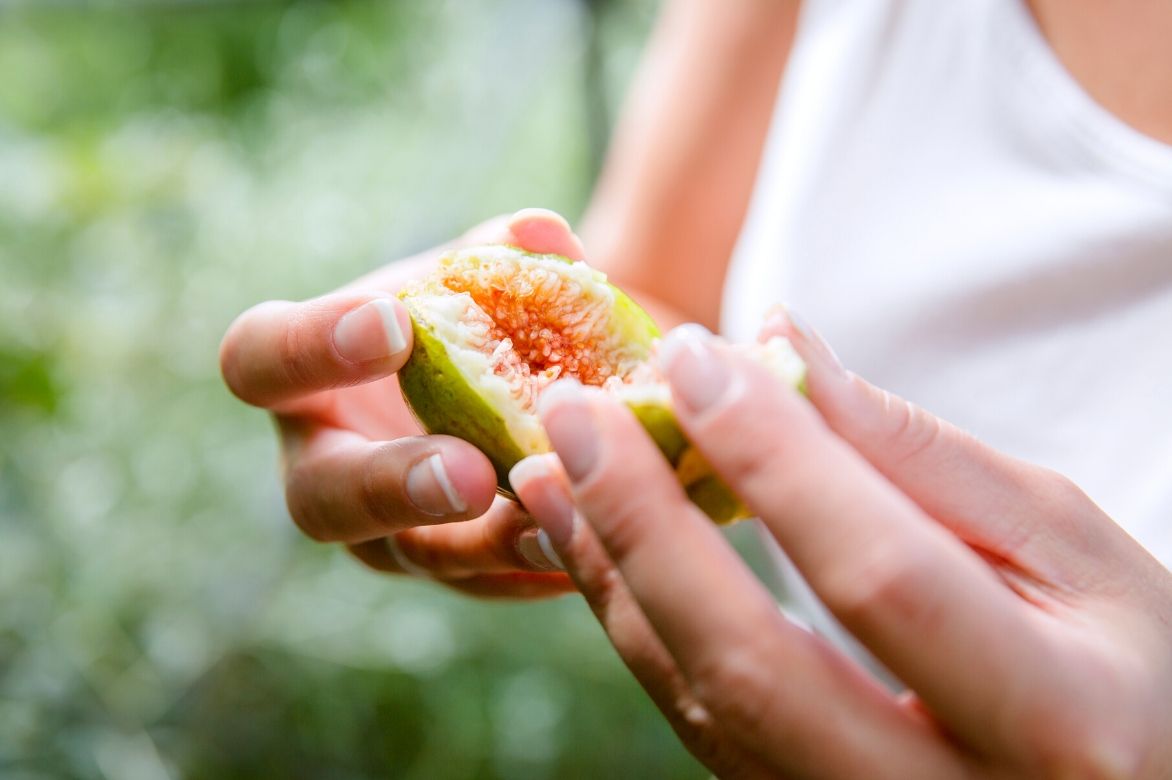
Maintenance, pruning and care
Although well adapted to drought, fig trees need regular watering, especially during first three years after planting to support their growth and fruiting. Soil must remain cool throughout summer. In hottest regions, water once or twice a week. After 2 or 3 years, fig trees will tolerate dry periods better.
Mulch the base every spring and, in regions with harsh winters, protect young fig tree from cold by spreading a thick layer of organic mulch (pine bark, dead leaves, straw) around the base and wrap aerial parts in several layers of winter fleece.
Every spring, apply an organic fertiliser (urban compost or well-rotted manure) to boost productivity.
Water plants grown in pots more regularly but never saturate the substrate with water: too much water can cause root rot. Repot every 2 years or top up soil by a few centimetres.
In coldest regions, bring container-grown fig trees indoors before frost (as soon as temperatures fall below -10°C).
When and how to prune fig tree
Although fig trees can do without pruning, pruning will improve growth and fig production. Prune preferably in early spring when sap rises and after harvest (September to December depending on region). Pruning fig tree is important but should not be too severe.
- In March, prune all misplaced branches or those growing vertically;
- In April, pinch out young shoots on young fig trees and, for well-established fig trees, shorten with a pruning shear the current-year shoots, just above the 2nd eye facing outwards from the tree;
- After fruiting, cut off shoots that have fruited;
- Paint pruning wounds with a wound-sealing mastic to prevent appearance of fig tree canker.
→ More advice to properly plant, prune and care for it !
→ Also discover our tutorial: How to prune a fig tree?
Fig tree diseases
Fig tree fig tree is a fruit tree that proves more resilient than most other fruit trees, however some diseases and pests can still attack it.
Fig tree is susceptible to tortrix moth (Eutromula nemorana), a small moth that nests in leaf folds. Leaves become covered with bristle filaments and black droppings, and are folded and full of holes. This is a problem with no impact on fig harvest or on tree health. However, in case of heavy attack, you can use pheromone traps.
More serious is fig tree canker, a fungal disease that often appears following poorly healed wounds after pruning. Calluses and deformities appear. As prevention, seal wounds well so they can heal and spray with Bordeaux mixture. There is no cure for this disease: cut off affected branches and treat lesions by applying a fungicide and a mastic, then treat whole tree with same fungicide. If infection is too severe, it is better to remove the tree.
Dans les régions aux hivers doux, fig fly can be a problem: figs are infested by maggots while still green, rendering fruits unfit for consumption and causing premature drop. As prevention, you can use sticky traps or a pheromone trap (one trap for two trees) or treat with an insecticide one month before fruit ripeness.
Mosaic can affect entire fig tree: leaves appear peppered with small blister-like swellings and large yellow patches alternating with green areas. There is no cure to eradicate fig mosaic. As prevention, avoid severe pruning.
Presence of fig scale insects is also possible, visible by appearance of black powder on leaves (sooty mould) which eventually weakens tree. Carry out sprays based on rapeseed oil at end of winter or during active growth.
Fig psyllid, a cousin of aphid, leaves white droplets on leaves and honeydew that attracts ants: encourage beneficial insects such as ladybirds and lacewings, which are major consumers of psyllids.
⇒ To find out more : Diseases and pests of fig tree. Read also : How to combat Mediterranean fruit fly?
Fig tree propagation
Fig tree, Ficus carica, propagates easily by layering but propagation by cuttings is faster, which is why we recommend it. Discover when and how to propagate fig trees in our advice sheet.
Associating
In an orchard in the southern half of our country, fig tree will pair well with a pomegranate, an almond tree, an apricot tree, a peach tree, a white mulberry, a Feijoa or Brazilian guava and a loquat.
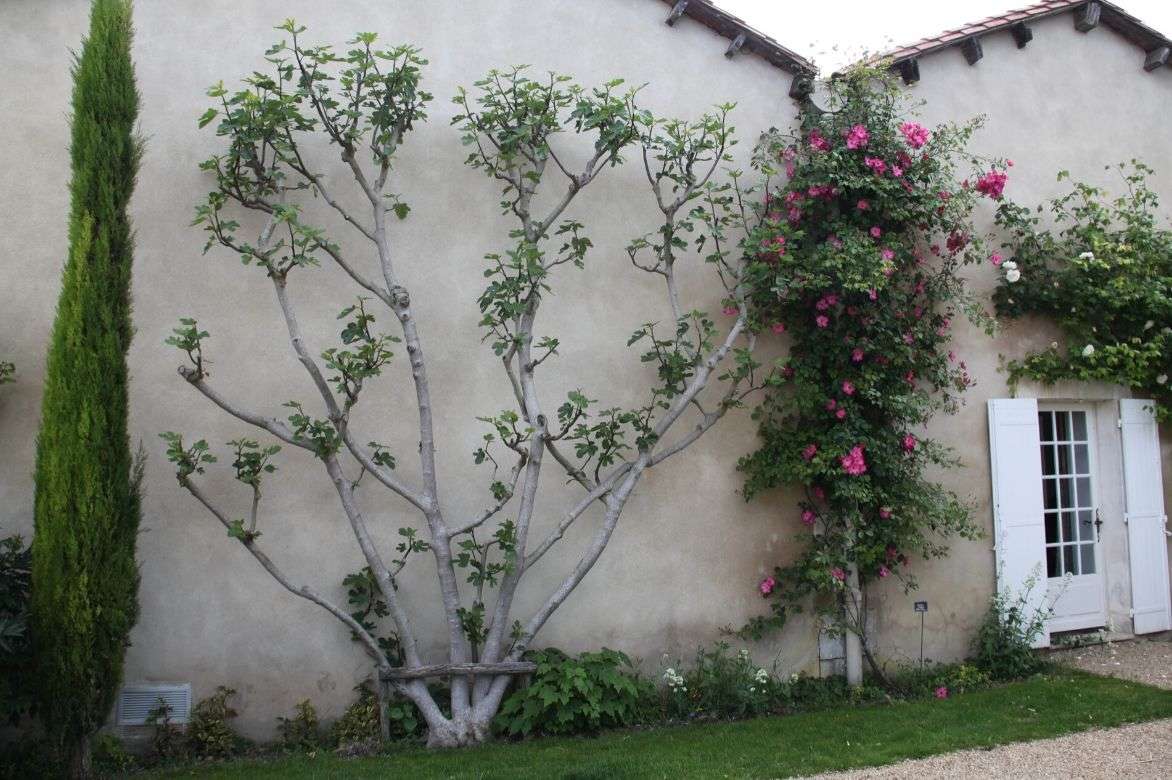
Fig tree trained as espalier on a well-exposed wall (Jardin du Chaigne)
North of the Loire, it can be associated with a Bigarreau cherry, a quince tree, mirabelle plum trees, an apricot ‘Rustique des Pyrénées®’. Plant it sheltered against a wall that will protect it from frost during harsh winters, alongside a pear tree, an apple tree, a Nashi pear — fruit trees that do not fear the cold.
Also consider kiwi, kiwiberry, goji, Chinese persimmon, fruit trees as hardy as they are exotic, as well as May berry, a small-fruited bush that is extremely hardy.
Useful resources
Discover :
- Our unique collection of Fig trees and all our original and exotic fruit trees!
- All advice on how to grow, protect and care for your fruit trees is on our blog!
- Our tutorial : How to take a fig cutting and succeed
- Article : How to dry figs?
- Article : Fig tree: how to choose the right variety?
- Article : Biferous or uniferous fig tree: what are the differences?
- Also discover 7 Mediterranean trees in our advice sheet
- Is your fig tree not fruiting well? Read our advice in our advice sheet!
- Choose 8 fig trees for northern half of France and Belgium; fig trees to plant in the south and old and local fig tree varieties
- Read our article : “Fig tree: essential varieties for the garden”
- Subscribe!
- Contents
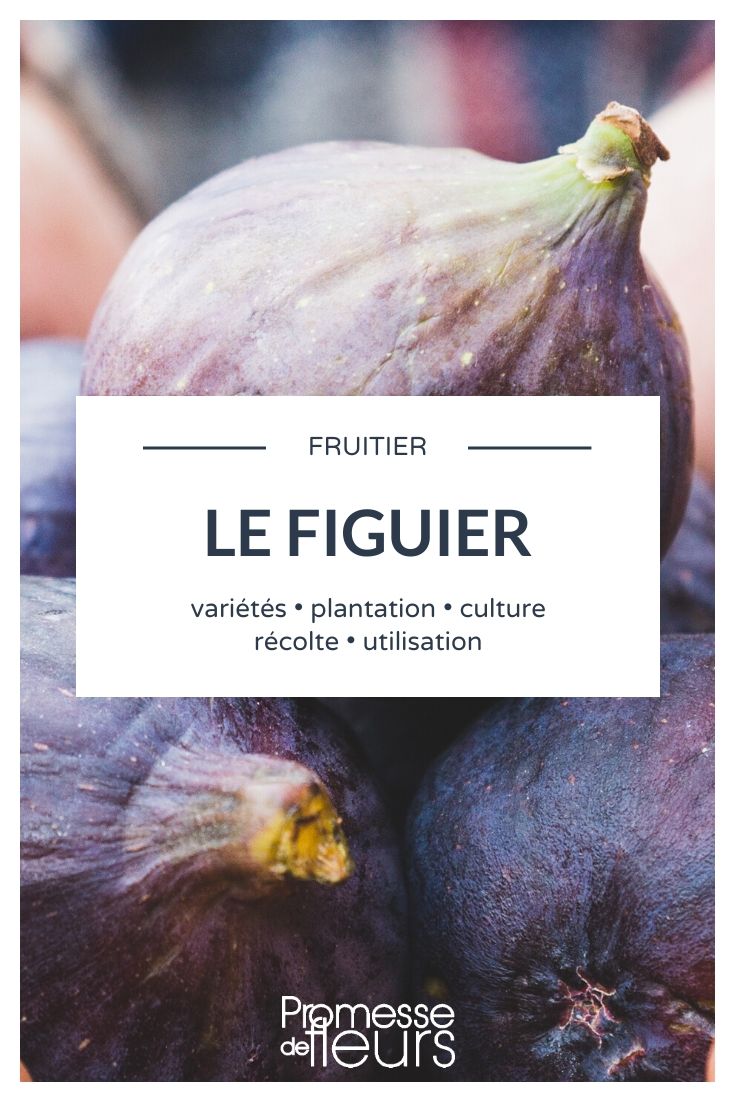




































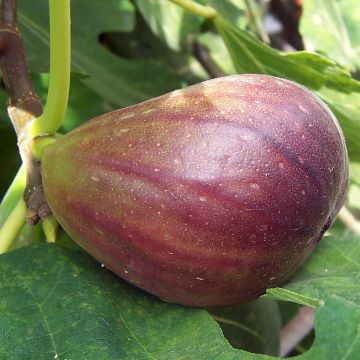
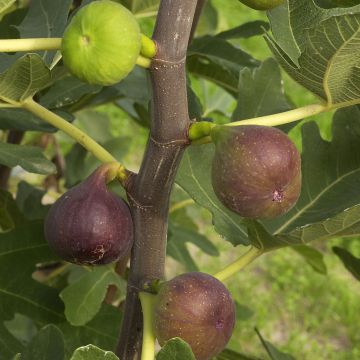
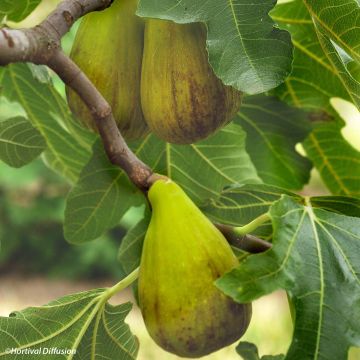
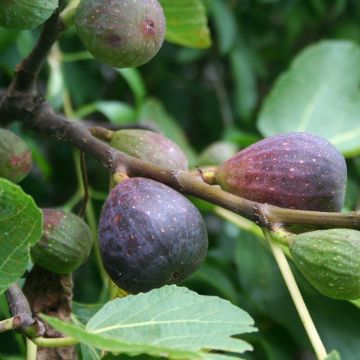
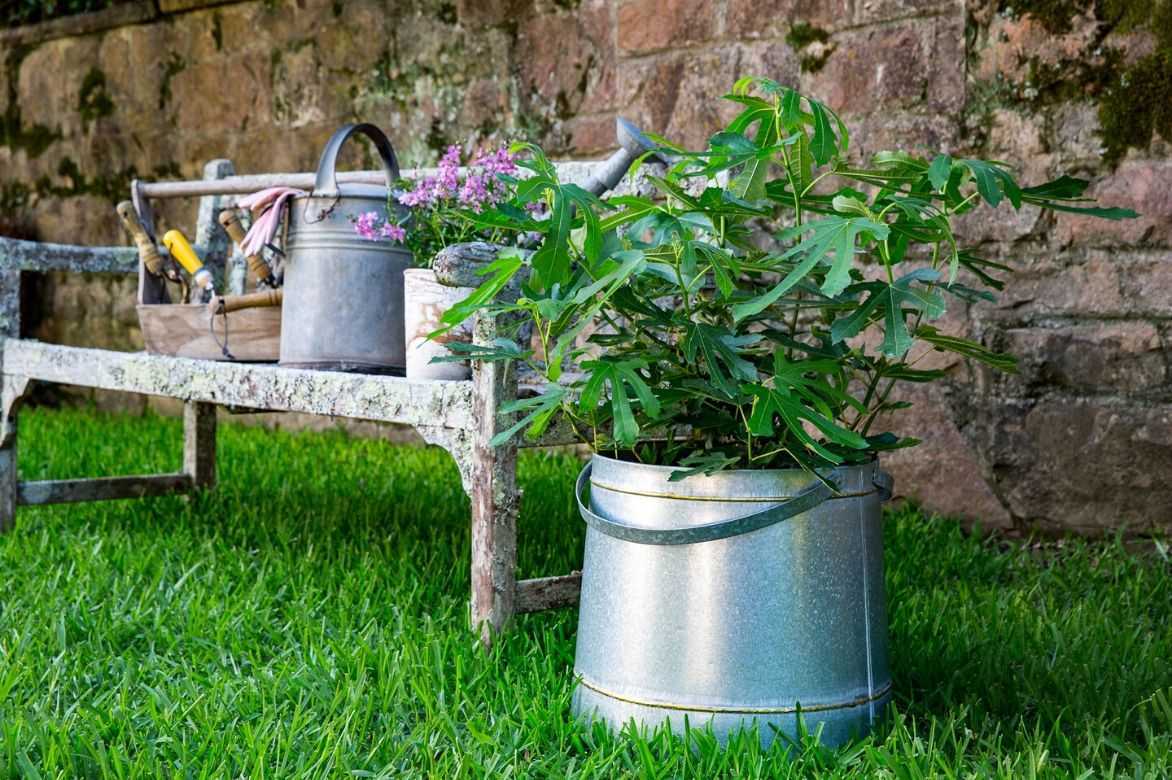
Comments